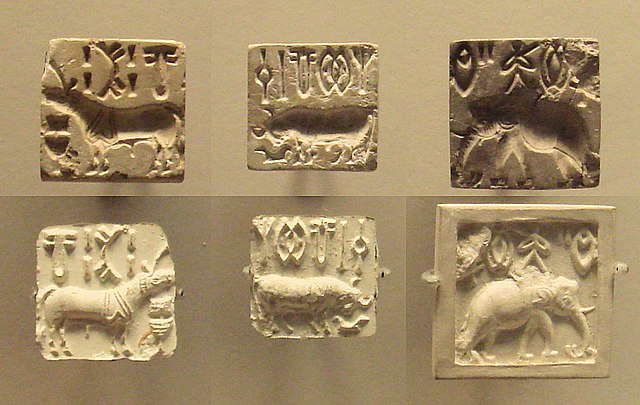The Cypro-Minoan syllabary (CM), more commonly called the Cypro-Minoan Script, is an undeciphered syllabary used on the island of Cyprus and at its trading partners during the late Bronze Age and early Iron Age. The term "Cypro-Minoan" was coined by Arthur Evans in 1909 based on its visual similarity to Linear A on Minoan Crete, from which CM is thought to be derived. Approximately 250 objects—such as clay balls, cylinders, and tablets which bear Cypro-Minoan inscriptions, have been found. Discoveries have been made at various sites around Cyprus, as well as in the ancient city of Ugarit on the Syrian coast. It is thought to be somehow related to the later Cypriot syllabary.
Cylinder seal antelope Louvre AM1639
Cypro-Minoan tablet from Enkomi in the Louvre
Cypro-Minoan clay ball
Cypro-Minoan clay ball in the Louvre.
Undeciphered writing systems
Many undeciphered writing systems exist today; most date back several thousand years, although some more modern examples do exist. The term "writing systems" is used here loosely to refer to groups of glyphs which appear to have representational symbolic meaning, but which may include "systems" that are largely artistic in nature and are thus not examples of actual writing.
Seals showing Indus script, an ancient undeciphered writing system
Page 32 of the Voynich manuscript, a medieval manuscript written with an undeciphered writing system
Indus script
Vikramkhol inscription







